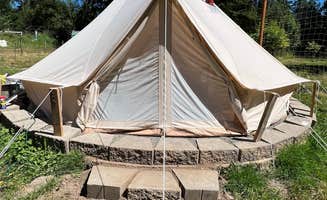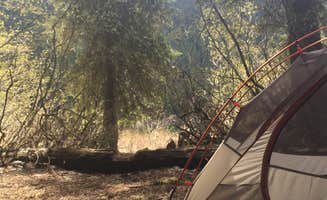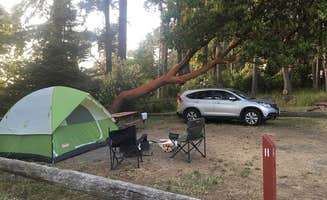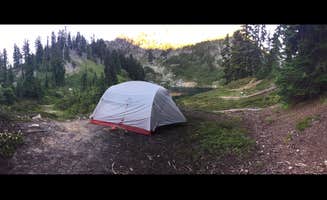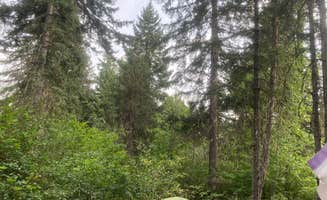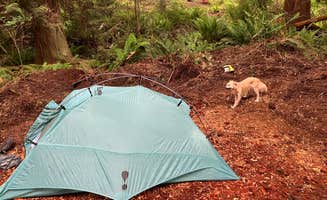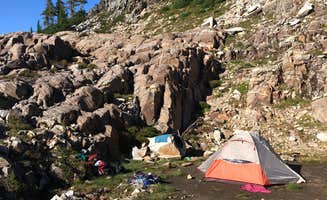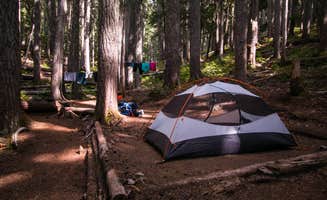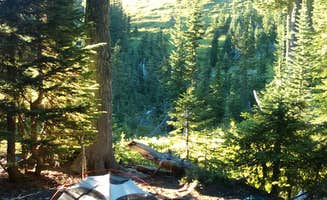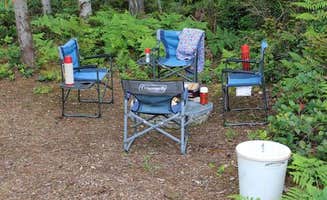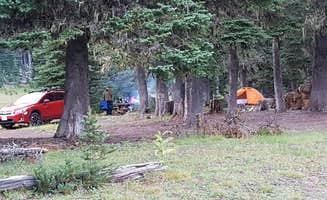Tent campsites near Snoqualmie, Washington range from alpine locations at elevations between 3,000-4,500 feet to riverside spots just a few hundred feet above sea level. Many sites become accessible only between late May and early October due to snowpack, with significant temperature variations between day and night even in summer months. Campsites throughout the region require different permits depending on location, with National Forest sites needing Northwest Forest Pass for parking and state parks requiring Discover Pass.
What to do
Hiking to alpine lakes: Access backcountry tent camping at Pratt Lake Hike In Campsite after a moderately challenging trail. "This is a large and Crystal clear Alpine Lake in the Alpine Lakes wilderness. The lake is full of fish so make sure you bring your Pole, beautiful trout were jumping," notes reviewer Alex T.
Canoeing on motor-free waters: Owhi Campground offers lakeside access for non-motorized watercraft. A visitor notes, "We canoed on the lake and saw a few Elk bugling. Really amazing views."
Island exploration: Camp on Blake Island Marine State Park Campground accessible only by boat. "Hike the perimeter trail for views all around the island. It's a great place to stay in the summer months and relax," recommends Christi R.
Wildlife viewing: Early mornings and dusk provide opportunities for spotting elk, deer, and various bird species. "We canoed on the lake and saw a few Elk bugling," reports one camper at Owhi Campground.
What campers like
Secluded waterfront sites: Tent campers appreciate private spots along water bodies. At White River Dispersed Camping, Reagan S. found "a large secluded spot in the woods. Road gets a bit worse as you drive further, but it was manageable. A little road noise but it's drowned out by the sound of the creek."
Well-spaced camping areas: Sites at Hollyhock Farm provide privacy uncommon in established campgrounds. "The sites were secluded from one another within a beautiful forest, the toilet was clean and fairly close to the sites, parking was easy and the host was a total gem!" reports Rio B.
Escaping crowds: Many experienced campers recommend visiting midweek. At White River Dispersed Camping, one visitor noted, "Came here on a Monday night and plenty of spots. Spots by the river looked kind of close together, so we drove a little further in and found a large secluded spot."
No-motor lakes: Several camping areas prohibit motorized boats, creating peaceful environments. At Owhi Campground, Donald C. mentions, "A boat launch is available but motors are not allowed on the lake."
What you should know
Remote location challenges: Many tent campsites near Snoqualmie require high-clearance vehicles. At White River Dispersed Camping, P.J. advises, "The road can be a bit thin, so I would be careful with extra large vehicles. It is also a bit of a challenging road, so low clearance vehicles wouldn't be treated well."
Insect activity: Alpine lake campgrounds can have significant mosquito populations. According to Alex T. at Melakwa Lake, "Melakwa means mosquito and they are not kidding- you have been warned! If you can deal with the bugs though this lake is STUNNING."
Campsite logistics: Some campgrounds require significant effort to access. Marie L. mentions about Owhi Campground, "Steep hill and trails to all the sites - pack light and even then it is A LOT of work getting into your site."
Food storage requirements: Bear activity necessitates proper food storage. "No bear boxes by the lake so you also have to trek your cooler/dry goods up the hill every night to not attract wildlife," warns a visitor at Owhi Campground.
Tips for camping with families
Choose sites with amenities: Campgrounds with toilets and tables work best for younger children. At Cold Creek Campground, Geoff T. notes, "Near Cold Creek, there is a very nice covered picnic area with two full tables and a fire pit. Another pit toilet is nearby."
Plan for weather changes: Mountain weather can shift rapidly, requiring extra layers even in summer. At Melakwa Lake, one camper found "in July there was still ice on the lake, which is at 4500ft."
Consider walk-in difficulty: Some campgrounds require significant hiking with gear. At Owhi Campground, Marie L. cautions, "Steep hill and trails to all the sites - pack light and even then it is A LOT of work getting into your site."
Look for swimming options: Several lakes offer swimming opportunities during warm months. At Pratt Lake, Alex T. reports, "The water was cold, but in the afternoon sun it was great for swimming."
Tips from RVers
Find alternative options: While most dispersed sites don't accommodate RVs, several established campgrounds do. At Wallace Falls State Park Campground, campers with RVs can find limited but suitable sites.
Consider smaller rigs: Forest roads often limit access for larger vehicles. Samantha J. at Wallace Falls shares, "We arrived and only had hammocks to camp in and the two walk up sites did not provides trees to manage our hammocks. Therefore we parked in the parking lot near a tree and strung our hammocks from the tree to the car."
Plan for lack of hookups: Most tent campsites near Snoqualmie lack RV amenities. "Great hike!" notes Victoria B. about Wallace Falls, which offers tent and cabin camping without typical RV hookups.
Be prepared for tight turns: Forest service roads often have limited turnaround areas. Donald C. mentions about Cooper Lake area, "There are horse camps at the end of the fire road with a cul-de-sac to turn around and head back out."


